In the ever-evolving world of fashion, aesthetics play a fundamental role in captivating the senses and igniting the imagination. While color, silhouette, and pattern often take the spotlight, an often overlooked but equally crucial element that breathes life into fashion design is texture. The tactile quality and surface characteristics of materials can transform a garment from ordinary to extraordinary, adding depth, visual interest, and a unique sensory experience.
Table of Content
- What is Texture in Fashion Design?
- Understanding the Key Factors Influencing Texture
- Types of Texture in Fashion Design
- A Basic Guide to Textures of Different Fabrics
- Influence of Texture in the Fashion Industry
- Conclusion
- All Topics on Elements of Design in Fashion
- All Topics on Principles of Design in Fashion
- Explore Free Courses
- Join Fashion Designing Course
What is Texture in Fashion Design?
Texture in fashion design refers to the surface interest of a fabric, influenced by the weave and light reflection. Our eyes delight in the interplay of light on smooth or rough surfaces, while our hands can feel the textures.
Some adjectives used to describe textures are smooth, fuzzy, furry, shiny, dull, bulky, rough, crisp, heavy, and thin. The texture of the fabrics depends on many factors, like the quality of the fibers, the process used in making fabrics, or finishes applied to the fibers, yarn, or fabrics. The texture of the finished garment can be changed by different fabric manipulation techniques (ruching, smocking, trapunto, etc.).
Understanding the Key Factors Influencing Texture
Texture in fashion is influenced by four factors.
- Fiber content
- Yarn structure
- Fabric structure and
- Finishes
These elements determine the visual, tactile, and performance qualities of a texture. In today's fashion trends, texture is a vital element that significantly impacts the overall visual effect and appearance of a garment. From delicate chiffon to cozy fleece and sturdy canvas, understanding texture is crucial for creating captivating designs. This understanding of the dynamics of texture helps individual consumers and fashion professionals make better decisions as they select apparel products and items of personal adornment.
Types of Texture in Fashion Design
Textures can be classified into two basic types in fashion design.

Tactile texture
Tactile texture in fashion design is the physical sensation and experience of touch when interacting with fabrics and materials. It pertains to how a garment feels against the skin or fingertips, adding a sensory dimension to the design. This texture can further be differentiated into rough, smooth, soft, fuzzy, embossed, ribbed, and crinkled types.
Visual Texture
Visual texture in fashion design is the illusion or appearance of texture created through visual elements, such as patterns, prints, or designs, rather than through actual tactile qualities. In other words, shininess, dullness, and mattress can also be said for visual textures. It involves using visual cues to simulate the look and feel of different textures, adding depth and interest to the overall design.
A Basic Guide to Textures of Different Fabrics
In the realm of fashion design, textures exhibit a range of distinctive attributes, encompassing adjectives such as smooth, rough, soft, and more. Discover the captivating variety of textures that bring depth and richness to garments.
Smooth
Fabrics like silk, satin, and certain types of knits have a smooth texture that gives a luxurious and elegant feel to garments that have a sleek and polished appearance.
Rough
Fabrics like denim, tweed, or burlap exhibit rough textures that add a rugged and casual element to designs.
Soft
Soft textures are characterized by their gentle and delicate feel. Fabrics such as chiffon, cashmere, or velvet have a soft texture that evokes a sense of comfort and luxury.
Fuzzy
Fabrics like mohair, angora, or faux fur create a fuzzy texture that adds warmth and tactile interest to garments.
Ribbed
Ribbed textures have raised lines or ridges on the surface. Fabrics like corduroy or ribbed knits exhibit ribbed textures that provide a visual and tactile element of interest.
Embossed
Embossed textures feature raised patterns or designs pressed into the fabric surface. Embossed leather, embossed velvet, or embossed prints create a visually intriguing texture that adds depth and dimension.
Crinkled
Crinkled textures have a wrinkled or crushed appearance. Fabrics like crinkled silk, crepe, seersucker, or crushed velvet exhibit crinkled textures that add visual interest and a relaxed, effortless vibe to designs.
Textured Prints
Textured prints like animal, floral, geometric motifs, or patterns stimulate the appearance of texture through printed patterns.
Knit or Woven Patterns
Cable knits, herringbone weaves, or jacquard patterns are those textured knits and weaves that add depth and dimension to the design.
Embellishments
Embellishments such as embroidery, beading, sequins, or appliqués add texture through their raised or decorative elements. They create a visually captivating and tactile texture on garments.
Influence of Texture in the Fashion Industry
Visual Impact
Different textures can visually alter the proportion of the body. For example, a smooth and clingy fabric may accentuate curves and create a body-hugging effect, while a rough textured fabric can add volume and create a more structured or oversized appearance.
Tactile Comfort
The texture of a garment can affect the comfort level of the wearer. Soft and smooth textures, such as cotton or silk, can provide a pleasant sensation against the skin, while rough or scratchy textures may cause discomfort.
Body Shape and Proportions
Textures can create visual illusions that affect the perceived shape and proportions of the body. For instance, textured patterns, such as vertical stripes, can elongate the body and create a slimming effect which is very helpful for shorter people. At the same time, horizontal textures may add width or draw attention to certain areas, which should be avoided for plus-size people.
Emphasis
Texture can be used strategically to emphasize specific body features. Textured elements or embellishments (like embroideries, appliqués, and smoking motifs) placed on certain areas can draw attention to them, while textured patterns or fabrics in darker colors can help conceal or minimize areas of concern.
Movement and Drape
The texture of a fabric can influence the way a garment moves and drapes on the body. Light and flowing textures (chiffon, silk, georgette, tulle, satin) can create fluid movements and graceful drapes, while stiffer textures (poplin, corduroy, denim) may hold their shape and create more structured or sculptural silhouettes.
The Impact of Texture on Color in Fashion Design
Texture plays a crucial role in influencing the appearance of color in fabrics. Rough textures tend to absorb light, resulting in flat and subdued colors. On the other hand, smooth textures reflect light, making colors appear brighter and more vibrant. For instance, a shiny vinyl or satin fabric can enhance the brightness of a color, while rough wool or suede may tone it down.
Throughout fashion history, texture has been recognized as a significant component. By introducing texture to a garment of a single color, captivating effects can be achieved. This can be accomplished through various techniques such as decoration, pin-tucking, smocking, gathering, and embroidery, all of which disrupt the surface and add visual interest.
Conclusion
In the world of fashion design, many designers prioritize selecting fabrics based on texture before creating their design sketches. The allure of texture often serves as inspiration, with designers seeking to find the perfect fit for their artistic vision. Moreover, texture possesses the ability to create optical illusions, influencing the perception of narrowness or fullness in the wearer. Similar to the effects achieved by lines, patterns, and colors, texture can impact the overall appearance of a silhouette, giving it a voluminous or slender aesthetic depending on the roughness or smoothness of the materials used.
Having gained insight into the significance of texture in fashion design, it is essential to delve into the factors to consider when selecting fabrics.
All Topics on Elements of Design in Fashion
To delve into all the subjects about elements of design in fashion, simply navigate through the list of blog posts below. Click on the headings to access the articles you're interested in reading.
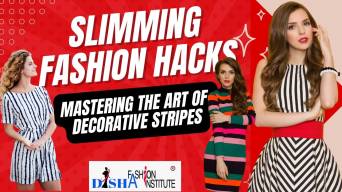
Elements of Design Line in Fashion
Elements of Design | Lines in Fashion | Creating Optical Illusions With Lines
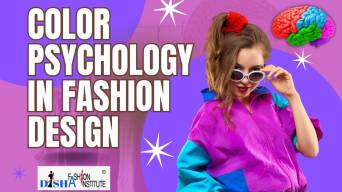
Color Psychology in Fashion Design
Impact of Color Psychology on Fashion Design: Exploring 12 Transformative Role of Color
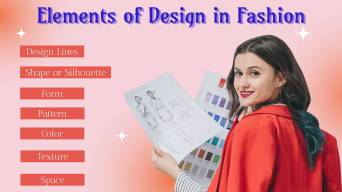
Elements of Design in Fashion
7 Elements of Design in Fashion You Must Understand as a Fashion Designer
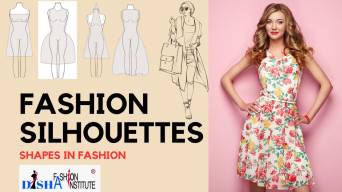
Types of Silhouettes in Fashion
Types of Silhouettes in Fashion | 12 Different Types of Fashion Silhouettes Explained
All Topics on Principles of Design in Fashion
To explore all topics on principles of design in fashion, browse the list of blog posts below and click on the relevant heading to access the articles.
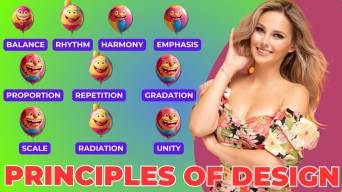
Principles of Design in Fashion
11 Principles of Design in Fashion You Need to Know to Become a Fashion Designer
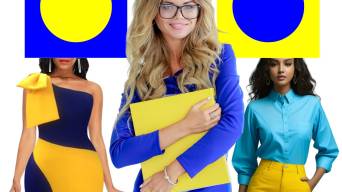
How to Contrast Colors for Clothing
How to Contrast Colors for Clothing | 8 Ways to Create Colour Contrast in Fashion
Explore Free Courses
Begin your fashion journey with our free fashion design foundation course. Dive into the world of style and creation today!
Fashion Designing Foundation Course
Join Fashion Designing Course
Enrol in our certificate courses for fashion designing and textile designing




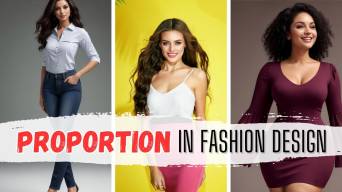

Add comment